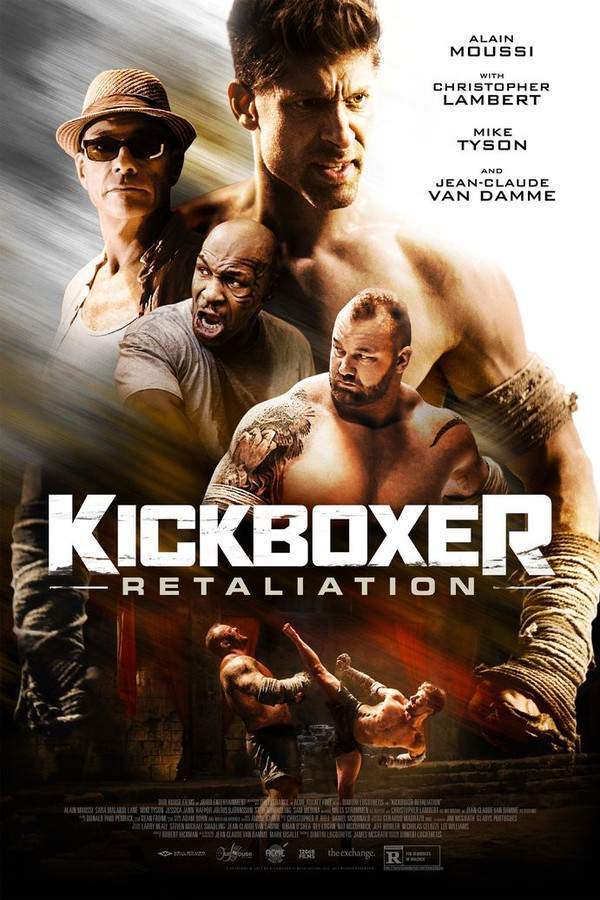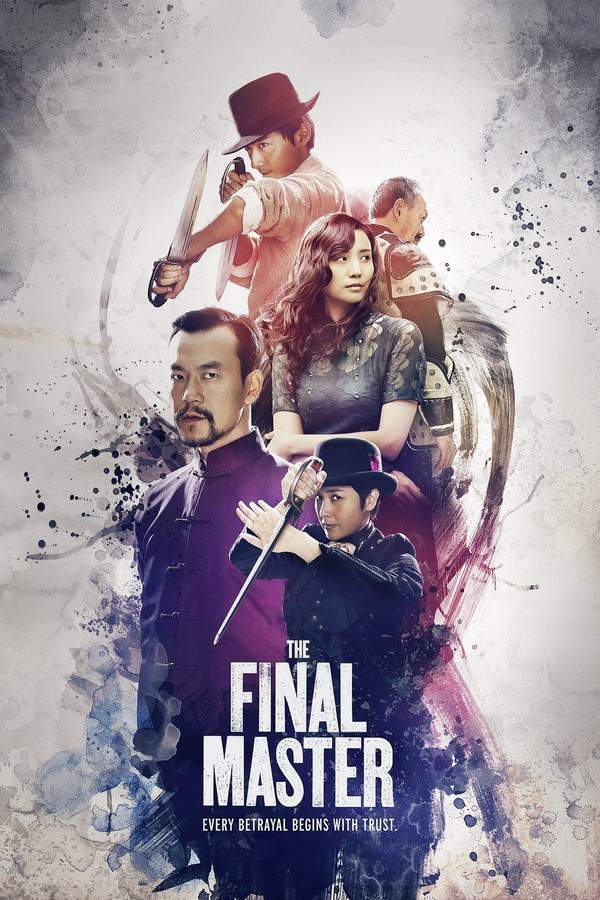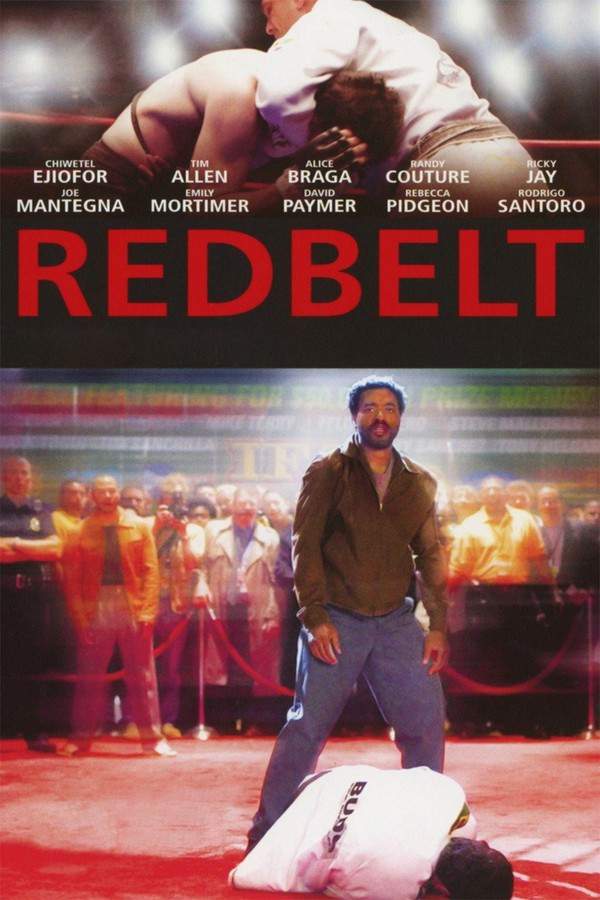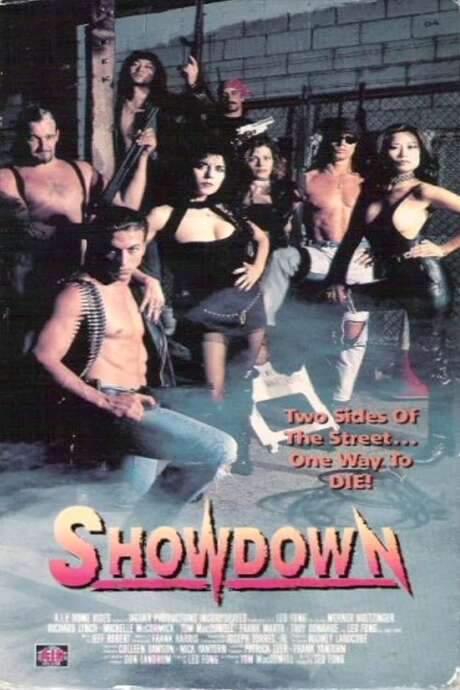
Tapped Out
Year: 2014
Runtime: 105 mins
Language: English
Director: Allan Ungar
A teenager, struggling with loss, is ordered to perform community service at a neglected Karate school. To confront the person responsible for his parents' death, he unexpectedly enters a mixed martial arts tournament, forcing him to find strength and resilience in the face of adversity.
Warning: spoilers below!
Haven’t seen Tapped Out yet? This summary contains major spoilers. Bookmark the page, watch the movie, and come back for the full breakdown. If you're ready, scroll on and relive the story!
Tapped Out (2014) – Full Plot Summary & Ending Explained
Read the complete plot breakdown of Tapped Out (2014), including all key story events, major twists, and the ending explained in detail. Discover what really happened—and what it all means.
At age twelve, Michael Shaw is a prodigy in karate, already earning a brown belt and showing a natural flair for speed and precision. On a ride home with his parents after a training session, their car is halted at gunpoint by two armed carjackers. In the chaos, one of the men fatally shoots Michael’s parents before the others drive away and vanish into the night. Hidden in the back seat, Michael witnesses the brutal moment and spots a distinctive tattoo on the neck of the killer, a clue that will haunt him years later. When the carjackers eventually depart, Michael slips away as well, shaken but alive, carrying that memory and the tattoo as a cold spark of revenge he does not yet understand.
Seven years pass, and the once-promising child fighter has become a troubled teenager living with his grandfather. A party misstep lands him in trouble, and his community service lands him at a run-down karate school owned by Reggie Monroe Reggie Monroe, a friend of his late father who keeps the place running with stubborn grit. At first, Michael is only focused on meeting the hours required to complete his sentence, but the air around the dojo begins to rekindle a spark he thought had burned out. The clang of boards and the discipline of training rub him the wrong way at first, but the old routines and the steady rhythm of practice start to pull him back toward a discipline he once loved.
There, he meets Reggie’s niece, Jen Monroe, a fan of Mixed Martial Arts who sees something in Michael that she’s drawn to—a shared history and a shared longing for purpose. Their chemistry grows quickly, and Jen invites him to a local MMA fight, inviting him to peek into a world that’s both brutal and beautiful. Jen asks Michael to keep their budding interest quiet from Reggie, who doesn’t approve of the sport as a path for his students. Still, the spark between Michael and Jen deepens as they spend time together, and Michael’s curiosity about the sport grows into something deeper: a plan to hit back at the man who shattered his family.
During the event, Michael recognizes a fighter—Dominic Grey Dominic Grey—as the very man responsible for his parents’ murder seven years earlier. The guilt, anger, and sense of unfinished business surge back in a storm of emotion. He tries first to escalate matters through the proper channels, but lacks proof to push the case forward. He then tries to enter the local MMA circuit to face Grey in the ring, hoping that revenge will come in the form of a definitive victory. When promoter Lou Lou refuses him entry to the circuit, Michael’s path to vengeance seems blocked by systems that require evidence and influence, not raw emotion.
Desperate, Michael follows Grey to his home and even contemplates a direct, lethal confrontation with a gun. Yet something keeps him from crossing that line. He returns to the police, offering Grey’s address again, hoping that the truth can bring closure without more bloodshed. A detective who once worked the original case takes a closer look at Michael’s statements and chooses to reopen the investigation, signaling a shift in the narrative from private vendetta to public reparation.
Around this time, Michael receives an unexpected chance to channel his fury through training rather than through reckless acts. He accepts Reggie’s earlier offer to learn properly, but he keeps his aim hidden: he wants to fight Grey in the arena to settle the score once and for all. Reggie agrees to mentor him the way a coach would, guiding him through the nuances of technique, timing, and control. To aid in his preparation, Reggie calls in friends who bring real-world experience to the dojo: Anderson Silva and Lyoto Machida, two martial artists whose styles complement Reggie’s coaching. Their presence elevates Michael’s training beyond the basics, pushing him to develop a broader arsenal and a sharper strategic mind. As Michael dedicates himself to the craft, he and Jen Monroe grow closer, their relationship strengthening as they share the personal stakes of his mission.
The night before the tournament, Reggie presents Michael with a symbolic black belt, a reminder of the path his father had believed him capable of following. The belt becomes a touchstone for Michael—a link to his father’s memory and a motivator to honor his family by fighting with discipline rather than letting rage dictate his moves.
The tournament itself becomes a crucible. Michael navigates a series of qualifiers with a blend of speed, precision, and the learned grace of karate that he has cultivated under Reggie’s tutelage and his friends’ guidance. He advances, moving closer to the final fight where he will encounter Dominic Grey in a direct confrontation that carries the weight of seven years of memory and a lifetime of loss. Grey, aware of the public spectacle before him, challenges Michael with taunts and bravado, attempting to provoke a fall from grace or a slip in technique.
As the final round unfolds, Grey dominates with brute power and a sneer in his voice, boasting that he will defeat Michael. In response, Michael speaks to the crowd and, in a moment of vulnerability and truth, hints at the crime that haunted him—an admission that Grey stands accused of murder, a reveal aimed at destabilizing Grey’s composure. In the ring, Grey uses every advantage, forcing Michael into a desperate struggle. In a climactic sequence, Grey traps Michael in a chokehold that seems to seal the young man’s fate. In that pivotal moment, Michael conjures a second wind, aided by the memory of his parents appearing in the crowd—an emotional surge that bolsters his resolve and technique.
What follows is a sustained showcase of karate mastery. Michael unleashes a torrent of precise strikes, countering Grey’s power with speed, timing, and a deep reservoir of training. The turning point comes when the arena’s momentum shifts, and Grey’s own plan to end the fight by making it look like an accident backfires. Michael’s training and restraint come to the fore; he resists the urge to deliver a lethal finish. Instead, he secures victory by breaking Grey’s leg, a decisive and mercifully non-lethal end that preserves Grey’s life while sending a powerful message about control and consequence.
With the tournament won, Michael receives the prize money—$50,000—but he chooses to give it to Reggie as a token of gratitude, recognizing that the money is not his alone but a return on the personal risk and mentorship that saved him. Grey’s humiliation in the aftermath is pronounced, and a newspaper article later reports that Grey confessed to the murder of Michael’s parents, cementing a public reckoning for the crime.
In the quiet aftermath, Michael and his grandfather visit the graves of his parents, where he places his black belt as a symbol of memory and honor. The grandfather’s closing wisdom—that Michael’s parents would be proud of him—echoes as a quiet testament to perseverance, responsibility, and the healing power of dedicated craft. The dojo thrives again under Reggie’s leadership, the memory of the old tragedy reframed through discipline, community, and a vow to channel pain into skill rather than vengeance.
Last Updated: October 09, 2025 at 16:07
Explore Movie Threads
Discover curated groups of movies connected by mood, themes, and story style. Browse collections built around emotion, atmosphere, and narrative focus to easily find films that match what you feel like watching right now.
Martial arts redemption stories like Tapped Out
Characters channel deep pain into disciplined fighting for a chance at personal salvation.If you enjoyed the journey from grief to glory in Tapped Out, explore more movies like it where characters use combat sports to overcome profound personal tragedy. These films blend intense emotional weight with the focused discipline of training, culminating in high-stakes tournaments or fights that serve as a test of spirit as much as skill.
Narrative Summary
These stories follow a protagonist grappling with a significant emotional wound—often loss or betrayal—who finds purpose and a means to process their pain through martial arts training. The narrative builds steadily towards a defining fight that is less about simple victory and more about proving their resilience, confronting the past, and achieving a sense of earned peace.
Why These Movies?
They are grouped by a shared core: using physical discipline and combat as a metaphor for internal struggle and healing. They blend heavy emotional themes with the visceral thrill of martial arts, creating a powerful, cathartic experience where victory feels deeply personal and redemptive.
Intense tournament fighter movies similar to Tapped Out
Gritty stories of underestimated fighters proving themselves in high-pressure tournaments.For viewers who liked the high-stakes MMA tournament and raw determination in Tapped Out, this thread gathers similar action dramas. Discover other movies featuring driven underdogs in intense combat sports, where every fight is a step towards a personal goal against overwhelming odds.
Narrative Summary
The narrative follows a clear path: an outsider with a strong personal drive is drawn into a competitive fighting arena. They undergo rigorous training, face increasingly dangerous opponents, and must conquer their own inner demons to survive the tournament. The structure is straightforward and focused, building anticipation for each match and the final, decisive bout.
Why These Movies?
These films share a specific narrative engine—the tournament arc—combined with a tense atmosphere and high emotional stakes. They deliver a consistent vibe of gritty determination, visceral fight scenes, and the thrill of watching an underdog rise through the ranks against all odds.
Unlock the Full Story of Tapped Out
Don't stop at just watching — explore Tapped Out in full detail. From the complete plot summary and scene-by-scene timeline to character breakdowns, thematic analysis, and a deep dive into the ending — every page helps you truly understand what Tapped Out is all about. Plus, discover what's next after the movie.
Tapped Out Timeline
Track the full timeline of Tapped Out with every major event arranged chronologically. Perfect for decoding non-linear storytelling, flashbacks, or parallel narratives with a clear scene-by-scene breakdown.

Characters, Settings & Themes in Tapped Out
Discover the characters, locations, and core themes that shape Tapped Out. Get insights into symbolic elements, setting significance, and deeper narrative meaning — ideal for thematic analysis and movie breakdowns.

Tapped Out Spoiler-Free Summary
Get a quick, spoiler-free overview of Tapped Out that covers the main plot points and key details without revealing any major twists or spoilers. Perfect for those who want to know what to expect before diving in.

More About Tapped Out
Visit What's After the Movie to explore more about Tapped Out: box office results, cast and crew info, production details, post-credit scenes, and external links — all in one place for movie fans and researchers.




























